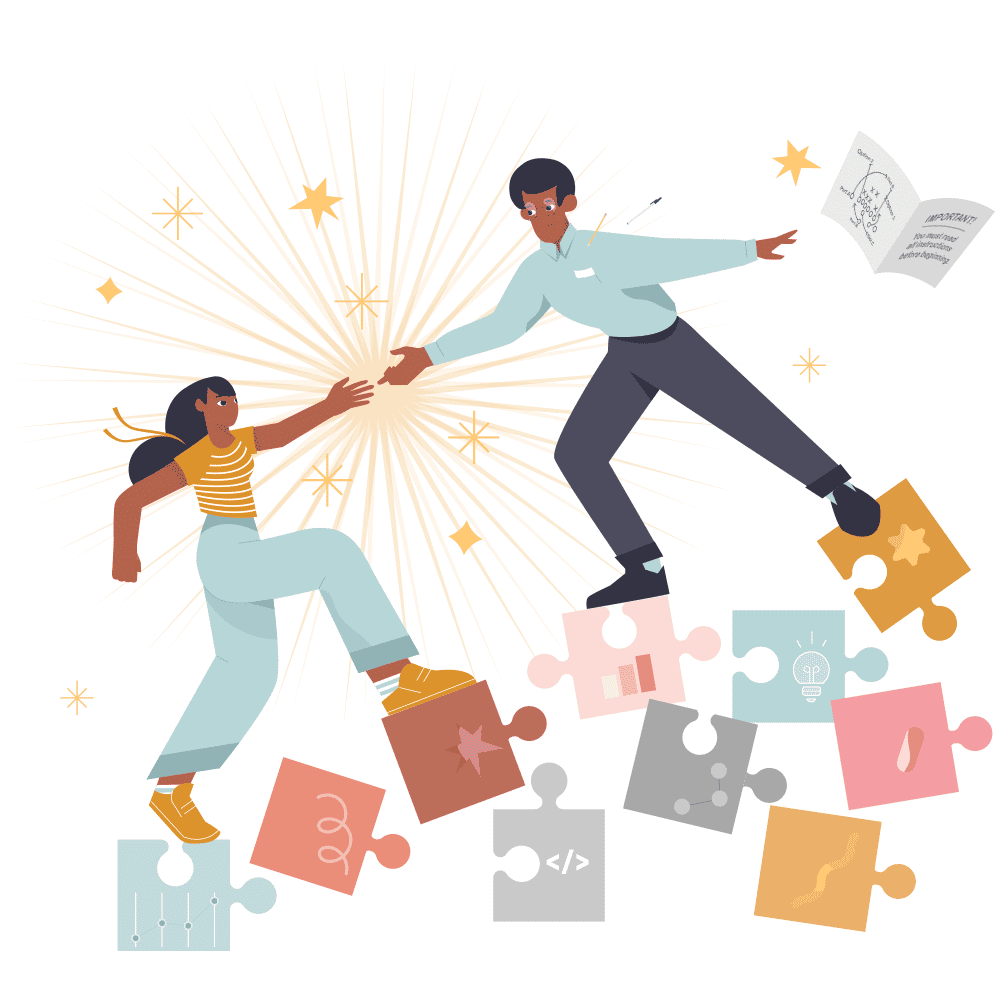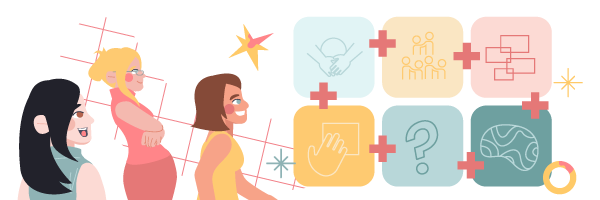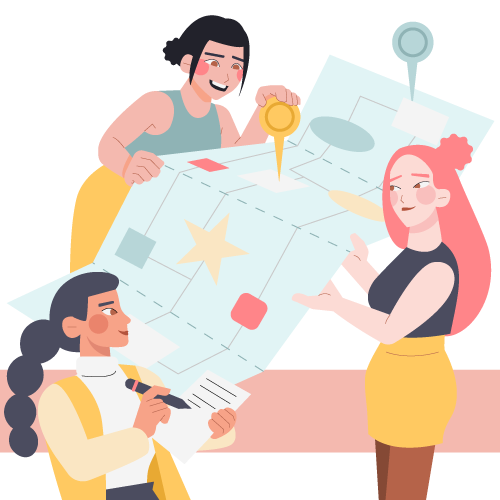We bet that when you hear the word “training,” educating your employees immediately comes to mind. Well, as much as that’s training, eLearning programs can target another kind of audience: your customers! Customer training aims to educate your customers, partners, and resellers. And after reading this guide, you’ll know what that means.
With our help, you’ll be able to confidently venture into eLearning customer training and get results from it. You’ll also get inspiration from a few successful customer training examples. Buckle up!
What Is Customer Training?
Perhaps the most rudimentary form of customer training is an unattractive instruction manual. You’ve probably used many of those. A new appliance, a piece of ready-to-assemble furniture, and a new car always come with a paper instruction manual.
Even if you downloaded a PDF instruction manual, you received the same type of learning experience: tedious. Instruction manuals have their place in the training space, and that’s for future reference.
But if your product is intrinsically elaborate or ground-breaking, you must deliver a more engaging learning experience. You need a customer training program.
Customer training teaches your customers, partners, and resellers how to use your product. It supplies content that educates them on:
- Your product’s features
- What it can do for its users
- How it works
And before you jump to the conclusion that your product is so intuitive that you don’t need customer training, keep reading.
Why You Need a Customer Training Program
Although disruptive products call for customer training louder than others, you can’t dismiss the following:
- Not all your buyers will pick up your product right away—some will need more direction than others depending on factors such as technology savviness and previous experience with similar products.
- Your product users have time constraints—which may limit the time they have to dedicate to learning to use new products even though they need them.
Product complexity has also increased in recent years. This means that even the most technology-savvy users might benefit from customer training. For this and many other reasons, people use product management tools such as Canny and their alternatives.
And the same goes for your partners and resellers. Selling or configuring complex products requires that they develop new skills. It also requires that they retain loads of information, and that’s no easy task! But a customer training program—especially eLearning customer training—offers a highly effective and memorable learning experience.
Benefits of Effective Customer Training
Here’s what customer training done right offers.
Extension of Your Customer Base
Customer training generates leads and helps you acquire customers, and there’s no business without any of them. So, investing in the design of a remarkable customer training experience will ultimately drive revenue.
You’ll attract more potential customers, and you’ll be able to gradually increase their interest in your product. The end goal is to get them to buy your product and turn them into actual customers.
Increased Product Adoption
When customers understand how to use your product for what they need, they adopt it. They stop looking for alternatives and start using your solution. Do you know why?
Exactly! Because they realized your product’s value for their context—their company, business, team, or clients. In a way, this means you can rely on customer training to keep you ahead of the competition.
Therefore, start using customer training to guide your customers through the phases of product adoption:
- Becoming aware that your product exists
- Comprehending how it satisfies their needs
- Beginning to use it
Boosted Customer Loyalty
A customer training experience that meets your customers’ expectations engraves your brand on their memory. And the more interactive, easy-to-use, and attention-grabbing the learning solution is, the longer they’ll recall your product.
Also, drop the jaws of your customers with content that answers all their questions—current and future. Carefully curate, design, and structure the information about your product, its value, and how it works.
Mind-blowing content and an unforgettable experience make up the formula for customer loyalty! And loyal customers become another link to your word-of-mouth chain and increase your referrals. They’re your product evangelists—or brand advocates, if you prefer.
The leads these special customers generate cover the cost of developing your customer training program. But you can magnify their contribution to your business growth. Implement a referral program with tools like ReferralCandy to incentivize product evangelists to spread the word about your product more systematically.
Raised Product Engagement
Product engagement evaluates the degree to which your customers use your product. And effective customer training takes your product engagement to stratospheric levels.
You’ll notice these changes in the way your customers interact with your product:
- More frequent and autonomous use of the product
- More varied use of the product’s features
- Fewer doubts about how the product functions
Improved Finances
If your customers have fewer doubts about using your product because of customer training, you’ll save money. You’ll receive fewer customer support tickets and spend less on customer support. And your savings will go beyond paying for developing your customer training program.
Another factor that brings money into your pocket is customer retention. Because customer training boosts customer loyalty, it boosts customer retention too. It leads your customers to discard competitive products and buy from you time and time again. And that’s a form of sustainable business development!
In other words, customer training will raise your customer lifetime value. You’ll see that your loyal customers will renew their subscriptions consecutively and upgrade to premium versions or plans.
Tips to Create Incredible eLearning Customer Training Programs
Let’s face it: customer training experiences that get your customers ready to use your product are moneymakers. But there’s a science behind developing exciting and effective eLearning experiences.
This is a curation of our best practices for eLearning customer training design that we’ve perfected over the years:
Consider the Timing
Cover the whole customer success lifecycle with eLearning programs that educate your customers on your product:
- When they’re looking for a solution to fix their problems and wish to learn more about yours
- When it’s time for you to teach them how your product will fulfill their specific needs
- After they bought your product and need all the remaining details about using your product profitably
- When they need to solve particular challenges they’re facing while using your product
Prioritize Key Customers
Key customers will benefit from your product the most and advocate for it. When creating eLearning customer training programs:
- Concentrate on the reasons why they need your product
- Figure out the areas in which they might be experiencing usability issues with your product and train them in those areas in advance
Rely on Adaptive Learning
Key customers have distinct goals for your product. To answer that, adapt your eLearning solution to teach the functionalities that matter most to key customer profiles.
Follow a Holistic Approach
Gather input from product, customer service, marketing, and sales teams. Each one of them has a unique insight into customers’ characteristics, challenges, and purposes.
Mind the Format
So far, we’ve talked about the information your key customers need and the timing for learning. Don’t get us wrong: that matters significantly to effective customer training. But the format plays a vital part in the success of an eLearning customer training program too.
In other words, you might choose to deliver your eLearning customer training program as
- An online course
- A mobile learning app
- An animated video
- A microlearning solution
- An infographic
- A slide deck or training presentation
And you may even combine some of these formats. For instance, you can offer an online course to your buyers and include multiple animated videos in it. Additionally, you can gamify the learning experience.
Regardless, you’ll see that the right combination of content and format will raise training completion levels.
3 Examples of Exceptional Customer Training
Some companies take customer training to the next level! Let’s check out a few.
1. HubSpot Academy
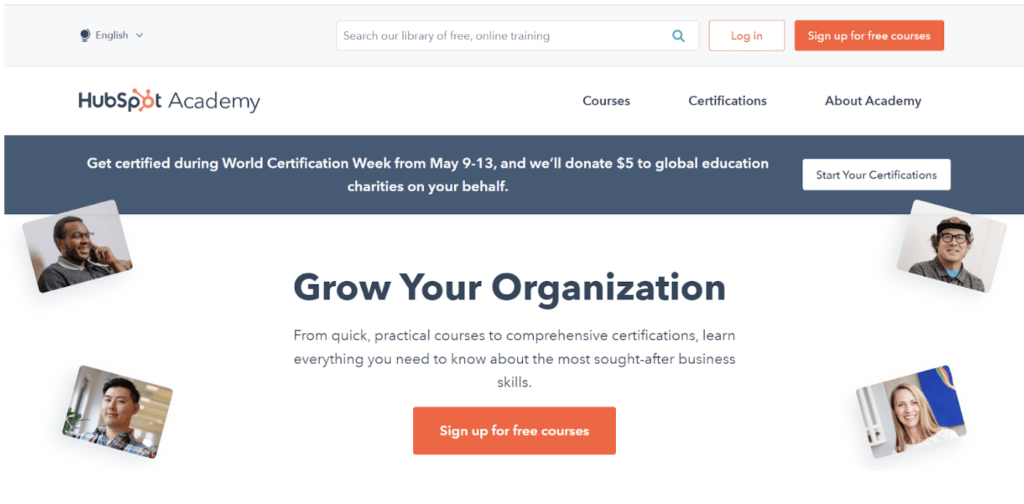
HubSpot offers beginning, intermediate, and advanced quick courses, bite-sized lessons, and comprehensive certification programs. Topics fall within the areas of inbound marketing, sales, or customer service. For instance, professionals worldwide go to HubSpot Academy to learn about social media marketing, email marketing, content marketing, and inbound sales. Training is online and free.
The Academy also includes access to user groups and a support forum. This builds a sense of community that’s engages HubSpot’s customers in the learning experience.
All lessons from the certification program include videos and quizzes. Plus, to pass the certification exam, customers can complete practical exercises. Dynamic content and interactive assessments cement the knowledge that HubSpot’s customers need to use the product.
2. Trailhead (Salesforce)

Trailhead is Salesforce’s learning resource center to build Salesforce, tech, business, and soft skills. Trailhead has its own learners’ community and offers options for mobile learning through a training app and Slack.
The app’s content is bite-sized, gamified, and includes videos and quizzes. This is highly convenient, stimulating, and ultimately provides an effective learning experience.
Salesforce organized customer training according to different industry roles. For instance, Trailhead suggests that Salesforce developers take a hands-on, stepwise project on how to create and deploy apps with Salesforce.
On the other hand, Trailhead recommends that marketing managers take a training module—or set of bite-sized learning units—on best practices for email marketing. This is a great way to shape eLearning customer training based on the diverse purposes for which customers use Salesforce.
Trailhead also contains:
- Beginner, intermediate, and advanced learning paths—with modules and projects appropriate for selected roles—that customers can customize even further
- Multiple Salesforce certification programs for professionals ranging from Salesforce administrators to Salesforce consultants
- Blended learning courses to prepare corporate teams for certification exams
- Virtual instructor-led courses as well as live or recorded webinars led by Salesforce experts
3. Zendesk Training
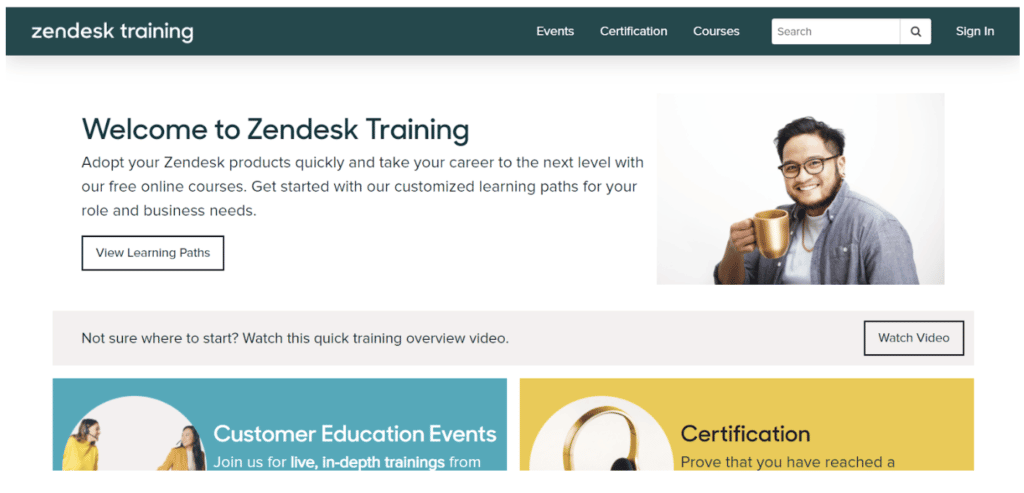
This eLearning platform includes online courses, certification programs, and learning paths for Zendesk’s customers. Zendesk tailored its customer training content to distinct roles such as Zendesk administrators, developers, agents, analysts, and sales teams.
Training modules include content in different formats such as text, video, hands-on activities, and quizzes. This is evidence that Zendesk embraces its customers’ varied learning preferences, appealing to customers and promoting effectiveness.
Live Up to Your Product with Customer Training
Customer training is popular among software companies. But truthfully, customer training applies to any company, particularly those with robust and comprehensive products.
It prepares your customers to use your product proficiently. And it does so by leveraging their knowledge of the product.
Customer training also helps you deliver the product benefits you promised your customers. In turn, they’ll achieve the business goals that led them to give your product a chance, whatever those goals were.
If you already have a customer training program in place, determine its gaps based on your key customers’ training needs. And if that’s not your case, and you’ll create a brand new customer training program, focus on the same needs. Either way, what are you waiting for? Contact us and tell us why you could use our help!

